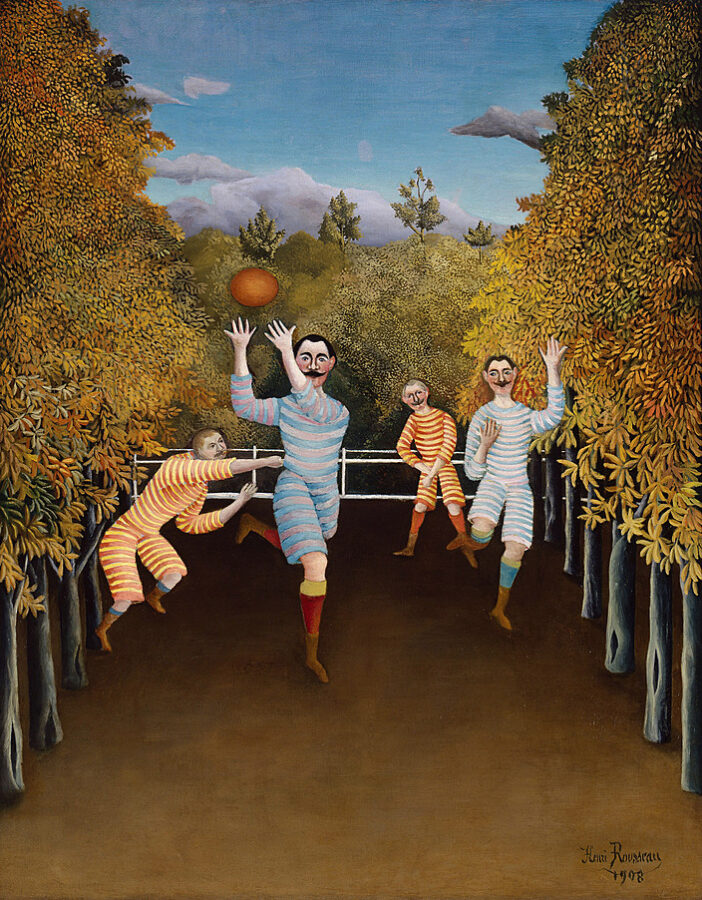Masterpiece Story: Buddha Dated 338
Buddha dated 338 is a masterpiece of Buddhist art and Chinese art with deep historical significance. It exemplifies the early blending of Indian...
James W Singer 14 December 2025
Welcome to the bizarre world of Henri Rousseau (1844–1910), the quintessential naïve artist, and meet his masterpiece depicting oneiric, striped football players.
Four almost identical men are having a good time, probably in a park in Paris. They are wearing what looks like striped pajamas and they all sport a handlebar mustache. Although this painting is known as the football players, these men are actually playing rugby. The trees in the landscape all look the same, while the clouds in the sky have a mysterious solidity. There is no single-point perspective and the heads of the men are slightly small for their bodies. It seems like the work of a gifted child. However, despite the lack of conventional craftsmanship, the emotions are all there. The fun the men are having is evident.

Rousseau’s work encapsulates everything that is naïve art. In broader terms, naïve art is art created by a person without formal art education and training. Naïve works have childlike innocence and spontaneity. They pay no heed to the laws of perspective and use clear outlines and bold colors. Despite the “simple” nature of naïve artworks, they reflect the untamed creativity of the artist.
Rousseau and other naïve artists are often considered a part of the primitive movement at the turn of the 20th century. In terms of style, there are many similarities such as a lack of perspective or clear outlines. However, the main difference is that primitive artists rejected formal techniques on purpose. In Rousseau’s case, the primitives were inspired by the unsophisticated character of his work, as later the Surrealists were inspired by the dreamlike atmosphere of his paintings.
Rousseau took painting seriously in his late forties when he retired from his job as a tax collector working on the outskirts of Paris. As a result, he was known among the artistic circles of his day as ‘’Le Douanier’’ (the tax collector). A self-taught artist, he admired the work of French academicians William-Adolphe Bouguereau (1825-1905) and Jean-Léon Gérôme (1824-1904) and aspired to become a member of the Academy himself.
Sadly, the untrained quality of Rousseau’s work did not resonate with the conservatism of Academic Art. On the contrary, he became popular among avant-garde artists and writers such as Pablo Picasso, Robert Delaunay, and Guillaume Apollinaire. From 1886 until 1910 he exhibited in the unofficial Salon des Indépendants and in 1905 he took part in the Salon d’Automne along with the Fauves. Picasso held a party in his honor and invited all the forward-thinking society members of Paris.
Even though he never left Paris, Rousseau is best known today for his lush and dreamy jungle scenes. The Football Players is his attempt at a modern times painting, with four enthusiasts of a new and popular sport. Rugby football came to France in the late 1870s through the British Isles. By the turn of the century, the French had won a gold medal in the 2nd Olympics of 1900 in Paris. Their team consisted mainly of players from Parisian teams and played their first truly international match in 1906 against New Zealand.
DailyArt Magazine needs your support. Every contribution, however big or small, is very valuable for our future. Thanks to it, we will be able to sustain and grow the Magazine. Thank you for your help!